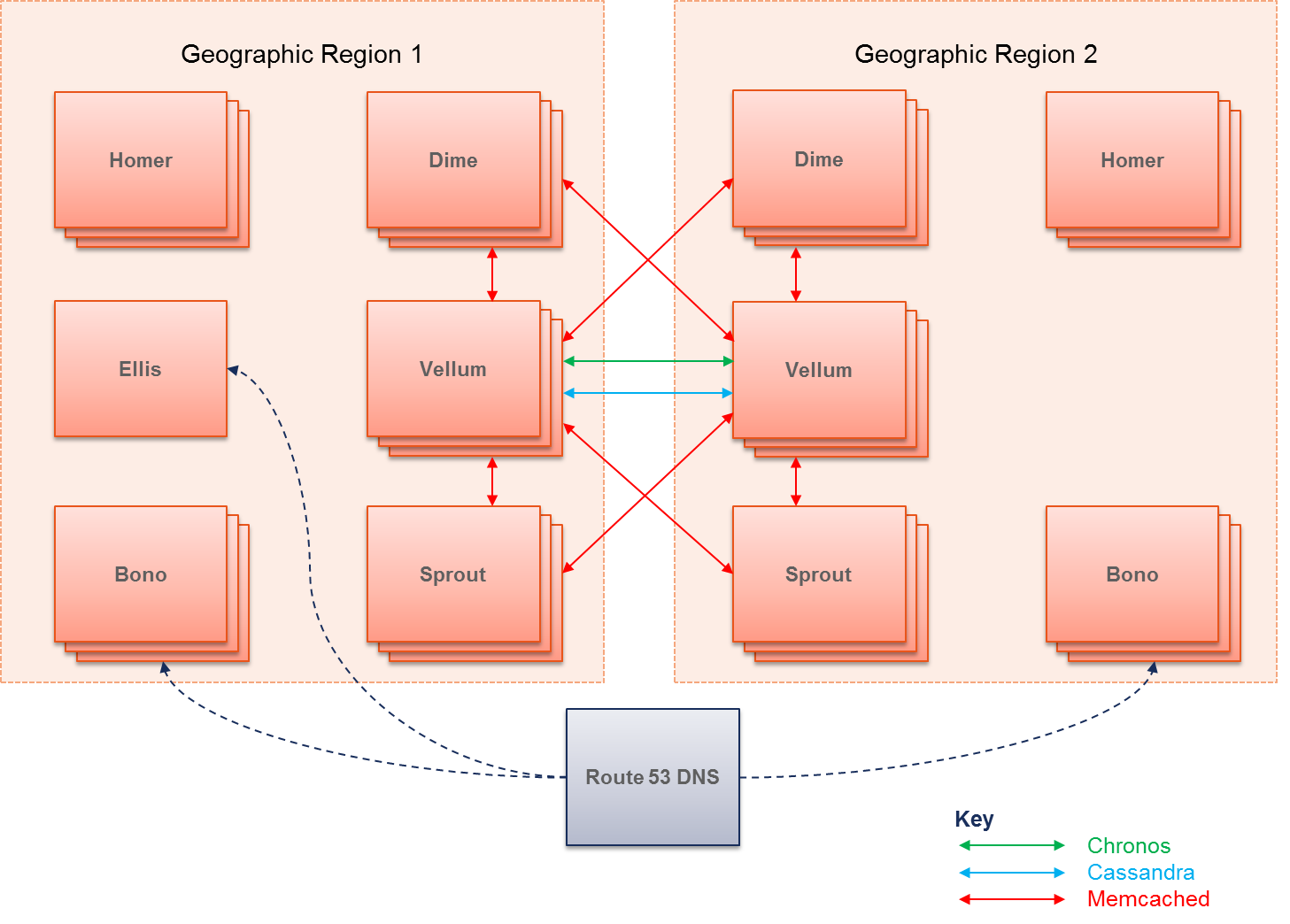Geographic redundancy¶
This article describes the architecture of a geographically-redundant deployment in Clearwater.
Details on how to configure a geographically redundant deployment are available here, and how to recover a deployment after site failure is described here.
Architecture¶
The architecture of a geographically-redundant system is as follows.

Simplified GR Architecture
Each site has its own, separate, etcd cluster. This means that Clearwater’s automatic configuration sharing only applies within a site, not between sites. Data is shared between the sites primarily by Vellum.
Vellum has 3 databases, which support Geographic Redundancy differently:
- The Homestead-Prov, Homer and Memento databases are backed by Cassandra, which is aware of local and remote peers, so these are a single cluster split across the two geographic regions.
- There is one Chronos cluster per geographic region. By default Chronos does not replicate timers to remote clusters, as timers are not sufficiently critical to require that level of redundancy. If desired, Chronos can be made aware of remote clusters and will handle replicating timers to the remote sites itself (details here).
- There is one memcached cluster per geographic region. Although memcached itself does not support the concept of local and remote peers, Vellum runs Rogers as a memcached proxy which allows Sprout and Dime nodes to build geographic redundancy on top - writing to both local and remote clusters, and reading from the local but falling back to the remote.
Sprout nodes use the local Vellum cluster for Chronos and both local and remote Vellum clusters for memcached (via Rogers). If the Sprout node includes Memento, then it also uses the local Vellum cluster for Cassandra. Dime nodes use the local Vellum cluster for Chronos and both local and remote Vellum clusters for memcached (via Rogers). If Homestead-Prov is in use, then it also uses the local Vellum cluster for Cassandra.
Communications between nodes in different sites should be secure - for example, if it is going over the public internet rather than a private connection between datacenters, it should be encrypted and authenticated with (something like) IPsec.
Ellis is not redundant, whether deployed in a single geographic region or more. It is deployed in one of the geographic regions and a failure of that region would deny all provisioning function
Separate instances of Bono in each geographic region front the Sprouts in that region. The Bonos should be able to contact the Sprouts in either region.
The architecture above is for 2 geographic regions - Project Clearwater does not currently support more regions.
Note that there are other servers involved in a deployment that are not described above. Specifically,
- Communication back to the repository server is via HTTP. There is a single repository server. The repository server is not required in normal operation, only for upgrades.
Limitations¶
The local IP addresses of all nodes in a deployment most be reachable from all other nodes - there must not be a NAT between the two GR sites. (This currently precludes having the GR sites in different EC2 regions.)